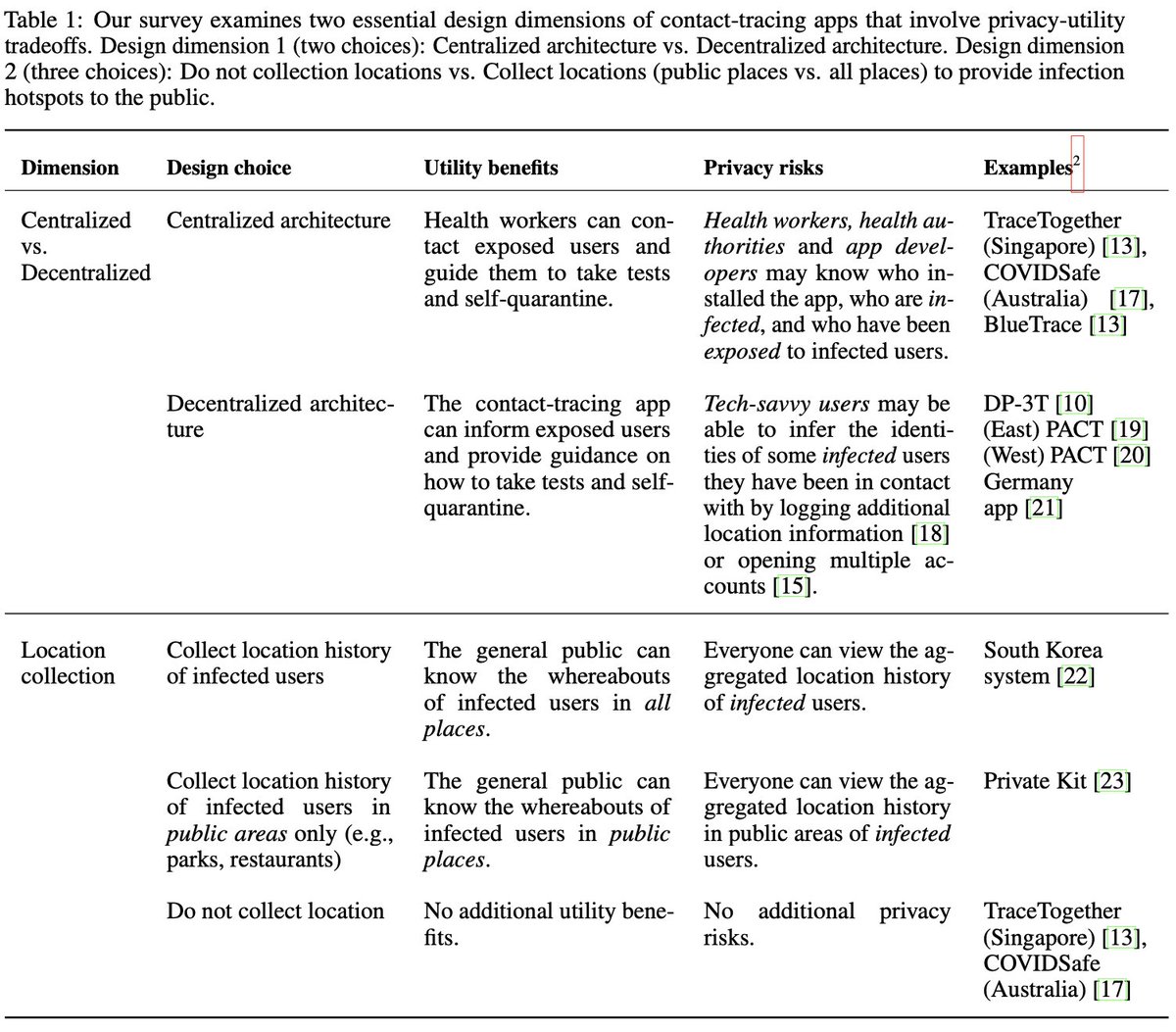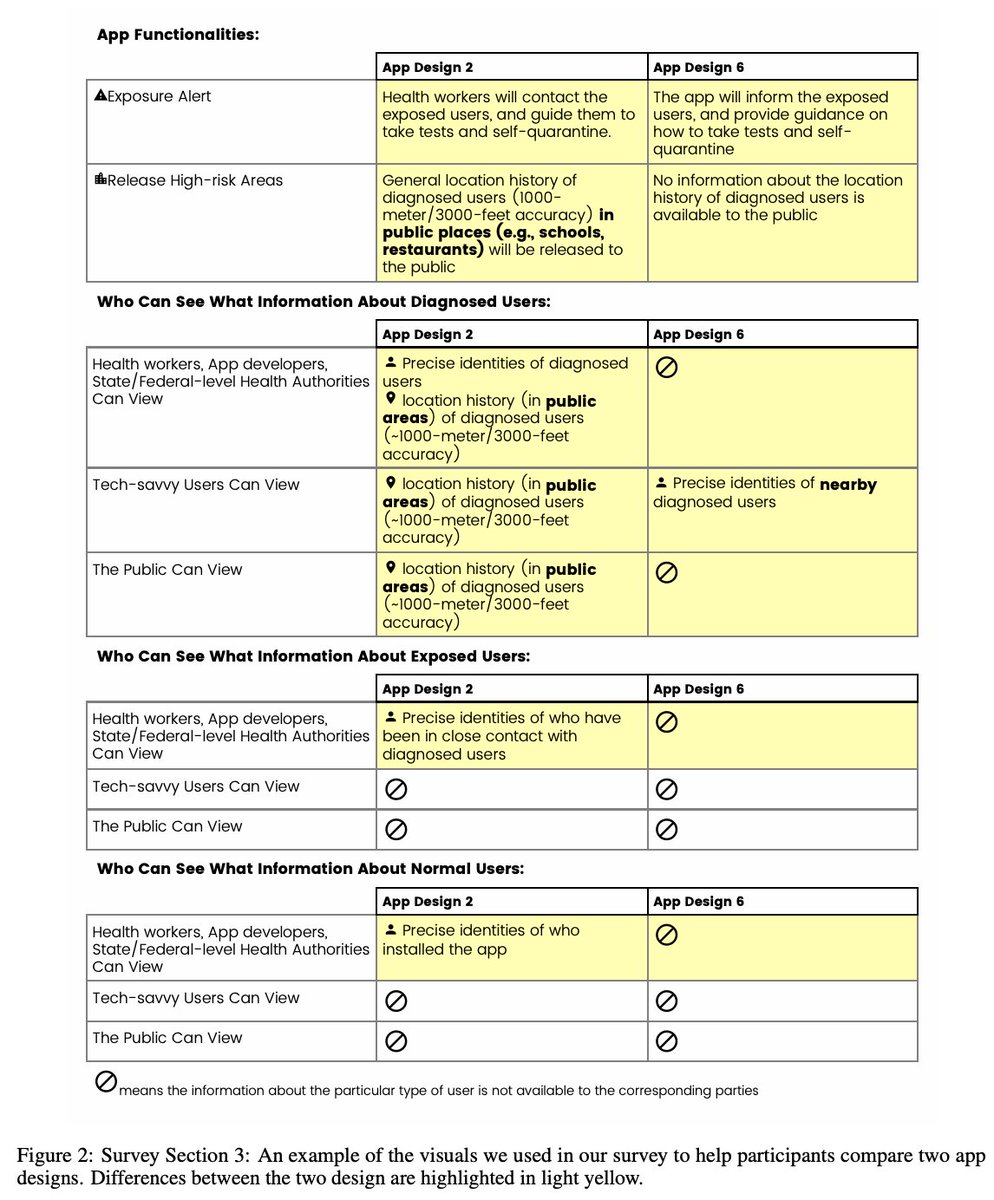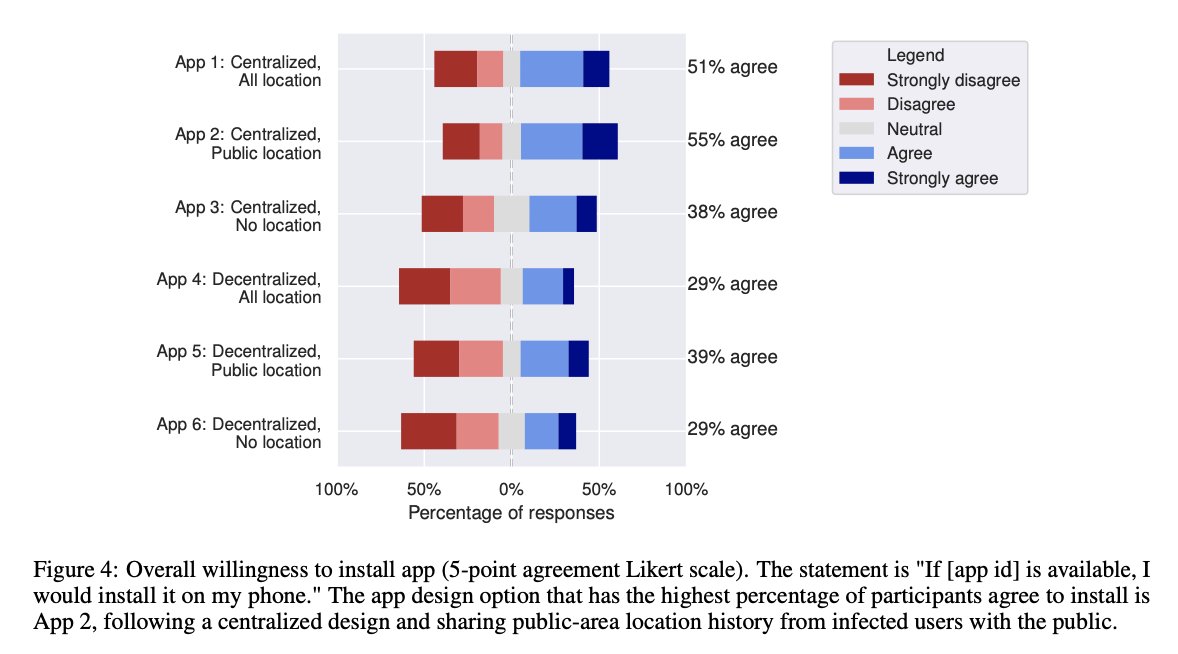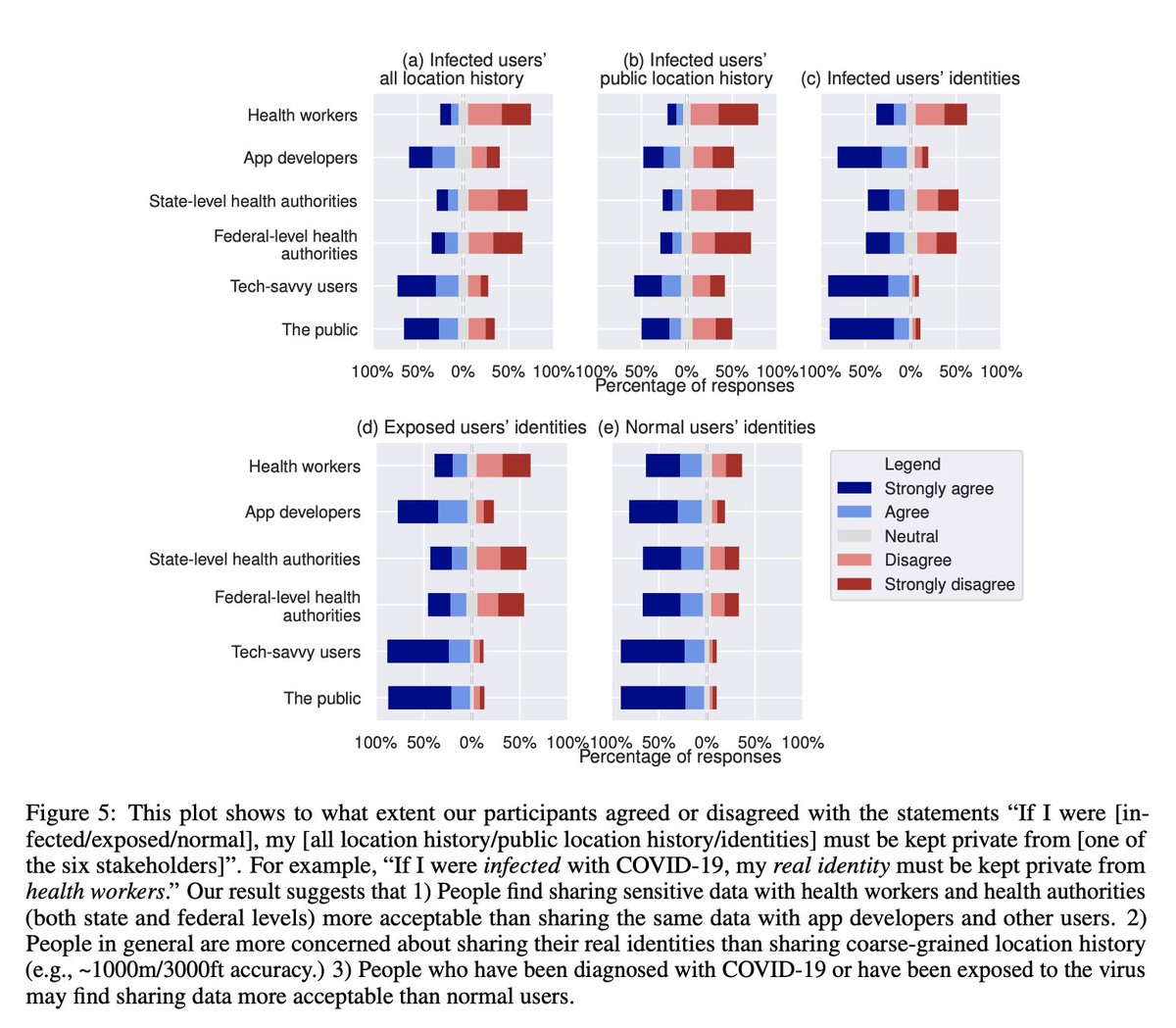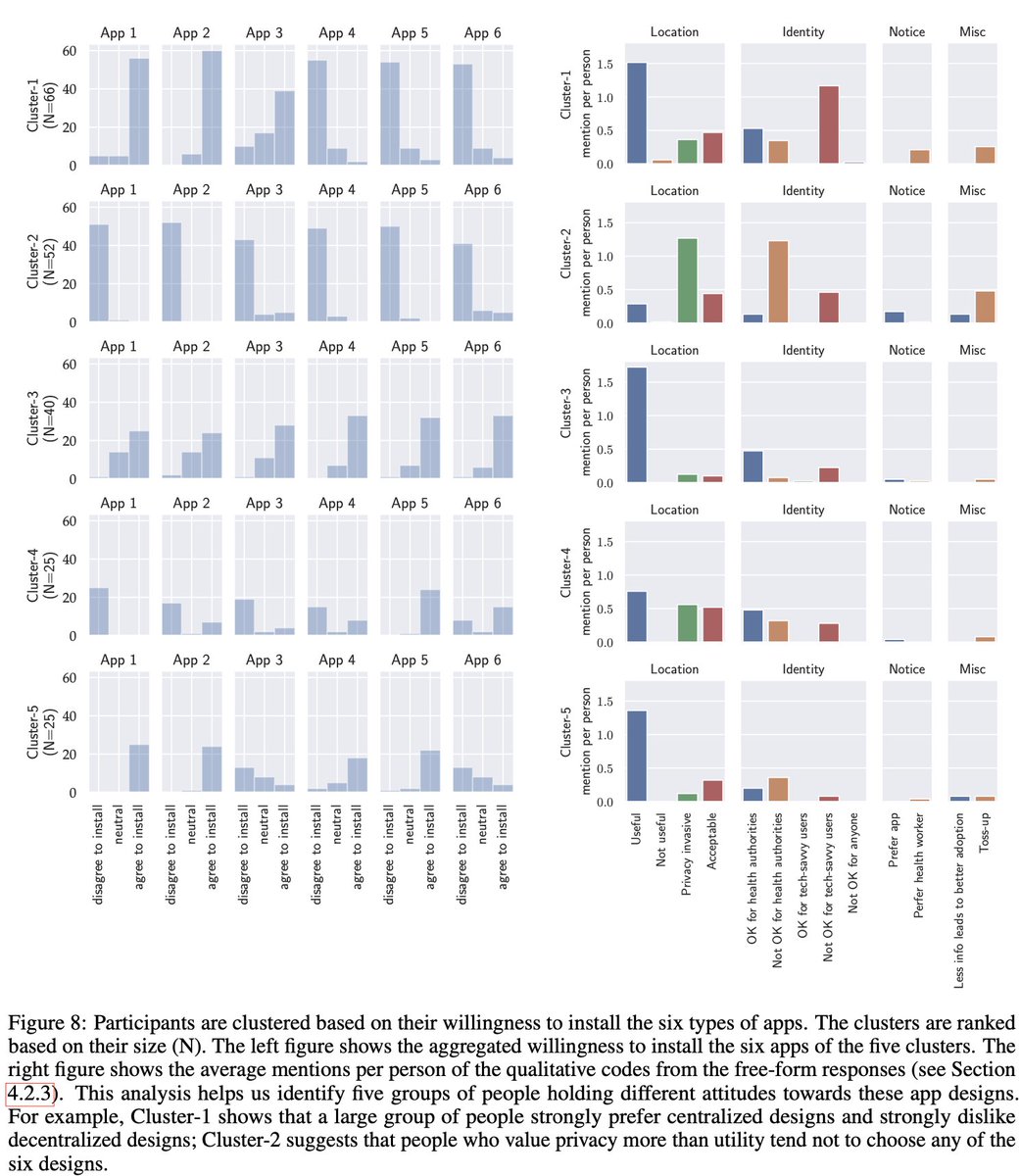You probably have heard of many updates about #COVID19 #ContactTracingApp recently, including the APIs jointly developed by @Google and @Apple, and many proposals such as #DP3T, BlueTrace, etc.
These apps require a large installation base to function well. Different app designs provide different trade-offs between privacy and utility. The question is, how do we know which app design is more appealing to users and thus may get a larger installation base?
To solve this problem, @jackieyang_ @heycori @kingjen Yuvraj Agarwal @dabbish @jas0nh0ng and I ran the first survey study comparing people’s installation preferences on different contact-tracing designs based on their different trade-offs (U.S.-only sample on MTurk, N=208).
We looked through existing contact-tracing app proposals and summarized two design dimensions (system architecture and location collection), which yielded six typical contact-tracing app designs.
We presented these choices, their privacy risks, and provided features to our participants and asked them to compare and rate the willingness to install these choices (both relative and absolute willingness) and expressed their reasons.
Surprisingly, contrary to popular belief, we found that the majority of people in our sample preferred to install apps that use a centralized server for contact tracing.
We learned that people are more concerned with tech-savvy users inferring the identity of diagnosed users than allowing a centralized authority to access the identity of app users.
To understand individual differences, we grouped participants with similar installation preferences into clusters. We found the largest cluster of people (32%) had a strong preference for centralized designs over decentralized.
The 2nd cluster (25% of our sample) disagreed with almost all app designs. They seemed to be the most privacy-conscious group in our sample, and they seemed to lean towards decentralized designs when having to make a choice, while these designs are still not acceptable to them.
The majority of our sample preferred to install apps that collect coarse-grained diagnosed users’ locations in public places to show hotspots of infection, as compared to an app that only supports basic contact tracing.
With that, we derive the following design suggestions for #ContactTracingApp in the U.S.:
1) Centralized designs with strong security may be more appropriate for a national-level deployment of contact-tracing apps;
1) Centralized designs with strong security may be more appropriate for a national-level deployment of contact-tracing apps;
2) Providing users with hotspots of infection info may nudge them to install the app. The location collection should be opt-in and the app should request the collection with multi-level choices to accommodate different preferences;
3) These apps should be transparent about both the risks of disclosing personal information to governments (for centralized designs) and to tech-savvy users (for decentralized designs).
Finally, we want to emphasize that decentralized solutions should not be posited as a risk-free solution since people seem to be more concerned with tech-savvy users identifying them than health workers and health authorities doing so.
For more information, please refer to our arXiv paper or DM us. https://arxiv.org/abs/2005.11957 ">https://arxiv.org/abs/2005....

 Read on Twitter
Read on Twitter